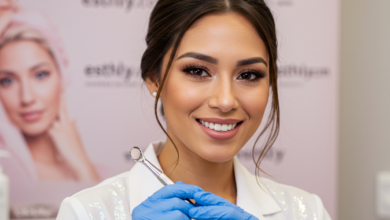How Long Does a Pimple Last? A Healing and Prevention Guide

Wondering how long does a pimple last? We can help you manage expectations and take proper care of your skin. Pimples can vary in duration depending on their type, severity, and the care routine you follow, making it important to understand the healing process. In this article, we’ll explore the factors that affect pimple duration, tips for faster healing, and strategies to prevent future breakouts.
What Determines How Long a Pimple Lasts
The duration of a pimple depends on its type, severity, and your body’s healing process. Factors include:
- Type of pimple:
- Whiteheads and blackheads usually heal within 1–2 weeks.
- Deep, cystic, or nodular pimples can take several weeks.
- Inflammation: More swelling and redness can make pimples last longer.
- Presence of pus: Pimples with pus often come to a head faster, while those without take longer to heal.
- Skin care and treatment: Proper cleansing, avoiding picking, and using suitable treatments can help pimples heal faster.
- Underlying causes: Hormonal changes, stress, diet, or infections can affect how quickly pimples disappear.
Tips to Avoid Pimples Lasting Too Long
- Don’t pick or pop: This can make pimples worse.
- Use non-comedogenic products: These don’t block pores.
- Follow a skincare routine: Cleanse twice a day and moisturize.
- See a dermatologist: If pimples last more than 6–8 weeks or get worse.
Average Duration of Different Types of Pimples
- Whiteheads (1–2 weeks)
Whiteheads happen when a pore gets clogged with oil and dead skin but stays closed. They’re mild and usually disappear in a week or two with gentle washing and basic acne treatments.
- Blackheads (1–2 weeks)
Blackheads are like whiteheads, but the pore stays open, so the oil turns dark. They often clear in 1–2 weeks, and exfoliating your skin can help them fade faster.
- Papules (a few weeks)
Papules are small, red, inflamed bumps under the skin. Painless pimples without pus heal slowly over a few weeks as inflammation decreases.
- Pustules (a few weeks)
Pustules are like papules but filled with pus, making them white or yellow on top. They last a few weeks and can stay longer if you pick at them.
- Nodules (several weeks)
Nodules are large, painful bumps deep under the skin. Because they’re deep, they can take weeks to go away and often need a doctor’s help or prescription medicine.
- Cysts (weeks to months)
Cystic acne is the most serious type. These are deep, pus-filled pimples that can last for weeks or even months. They usually need medical treatment to prevent scarring.
The Pimple Healing Process
Stage 1: Formation (Clogged Pores)
A pimple starts when oil, dead skin cells, and bacteria block a pore. This trapped oil becomes a perfect place for bacteria to grow, causing the first signs of a pimple.
Stage 2: Inflammation (Red, Swollen, Painful)
Your body fights the bacteria, which causes redness, swelling, and sometimes pain. This is the skin’s natural way of protecting itself.
Stage 3: Healing (Drying or Flattening)
The swelling goes down, and the pimple may dry out, flatten, or form a tiny scab. Gentle cleansing and spot treatments can help it heal without extra irritation.
Stage 4: Recovery (Skin Repair and Dark Spots)
After the pimple heals, your skin starts making new cells. Sometimes, dark spots or light scars appear, but they usually fade over time with good skincare and sun protection.
The process can take from a few days for small pimples to several weeks for deep or cystic acne. Proper care can speed up healing and reduce scarring.
See also: What Electrical Glitches May Mean for Your SUV’s Long-Term Health
Tips for Faster Healing
The quickest way to help a pimple heal is by using targeted treatments that match its stage. Derma Angel’s pimple patch range is designed to support different phases of acne for faster and more effective results.
- Underground Pimples
Use Acne Patch Plus or Clear Patch Intensive for deep pimples to reduce swelling, fight bacteria, and prevent worsening.
- Surface Pimples
Use Acne Patch or Clear Patch Original to flatten pimples, reduce redness, and protect them from picking for faster healing.
- Post-Pimple Marks
Use Spot Brightening Patch or Clear Patch Brightening to fade dark spots and even out skin tone after pimples heal.
These steps help reduce inflammation, prevent new breakouts, and support faster recovery.
Key Ingredients That Help Skin Heal Faster
- Hydrocolloid: Hydrocolloid patches are a quick and effective way to heal pimples. They soak up extra oil and keep the area clean, protecting it from dirt, bacteria, and touching, so your skin can heal faster.
- Salicylic Acid: This acne-fighting ingredient gently exfoliates inside the pores, clearing out dead skin cells and excess oil. Regular use helps heal existing pimples and prevent new ones from forming, keeping your skin smoother and clearer.
- Tranexamic Acid: Known for its brightening power, tranexamic acid targets post-acne dark spots and uneven skin tone. With consistent use, it helps fade discoloration and promotes a more radiant, even complexion.
These ingredients target inflammation, bacteria, and clogged pores, helping pimples heal faster and reducing the risk of scarring.
When to See a Dermatologist
If your acne lasts more than two weeks or keeps getting worse even with over-the-counter treatments, it’s time to see a dermatologist.
A dermatologist can:
- Find out what’s causing your acne. It could be related to hormones, diet, stress, or even skin infections. Understanding the cause helps you choose the right treatment and prevent future breakouts.
- Identify serious types of acne, such as cystic or nodular acne. These types are often painful and harder to treat so they may require prescription medication or special care from a dermatologist.
- Treat it early to prevent scarring, reduce swelling, and stop acne from getting worse.
Seeing a dermatologist early can stop long-term damage, reduce swelling, and give treatment that fits your skin.
How to Prevent Future Breakouts
Preventing acne isn’t just about treating pimples, it’s about keeping your skin healthy and balanced. Consistent skincare, good habits, and mindful lifestyle choices can help reduce breakouts.
Daily Skincare Tips
- Cleansing: Wash your face twice a day with a gentle cleanser to remove dirt, oil, and makeup. Avoid harsh scrubbing, which can irritate the skin.
- Exfoliation: Exfoliate 1–2 times a week to remove dead skin cells and prevent clogged pores. Use mild exfoliants like salicylic acid or glycolic acid.
- Hydration: Even oily skin needs moisturizer. Use a lightweight, oil-free option to keep skin balanced and hydrated.
- Sun Protection: Always apply sunscreen. Sun exposure can worsen irritation and dark spots, especially when using acne treatments.
Healthy Lifestyle Habits
- Diet: Eat plenty of fruits, vegetables, and whole grains. Limit sugary foods, processed snacks, and dairy if they trigger breakouts.
- Hydration: Drink enough water to help flush out toxins and maintain healthy skin.
- Stress Management: Stress can worsen acne. Practice meditation, yoga, or deep breathing to relax.
- Sleep: Aim for 7–8 hours of sleep nightly to support hormone balance and skin repair.
- Hygiene: Change your pillowcases often, wash your hands before touching your face, and regularly clean your phone screen. These habits help keep bacteria and dirt away from your skin, reducing the risk of new breakouts.
Following these steps consistently can minimize breakouts, improve your skin’s appearance, and keep it healthy long-term.




